


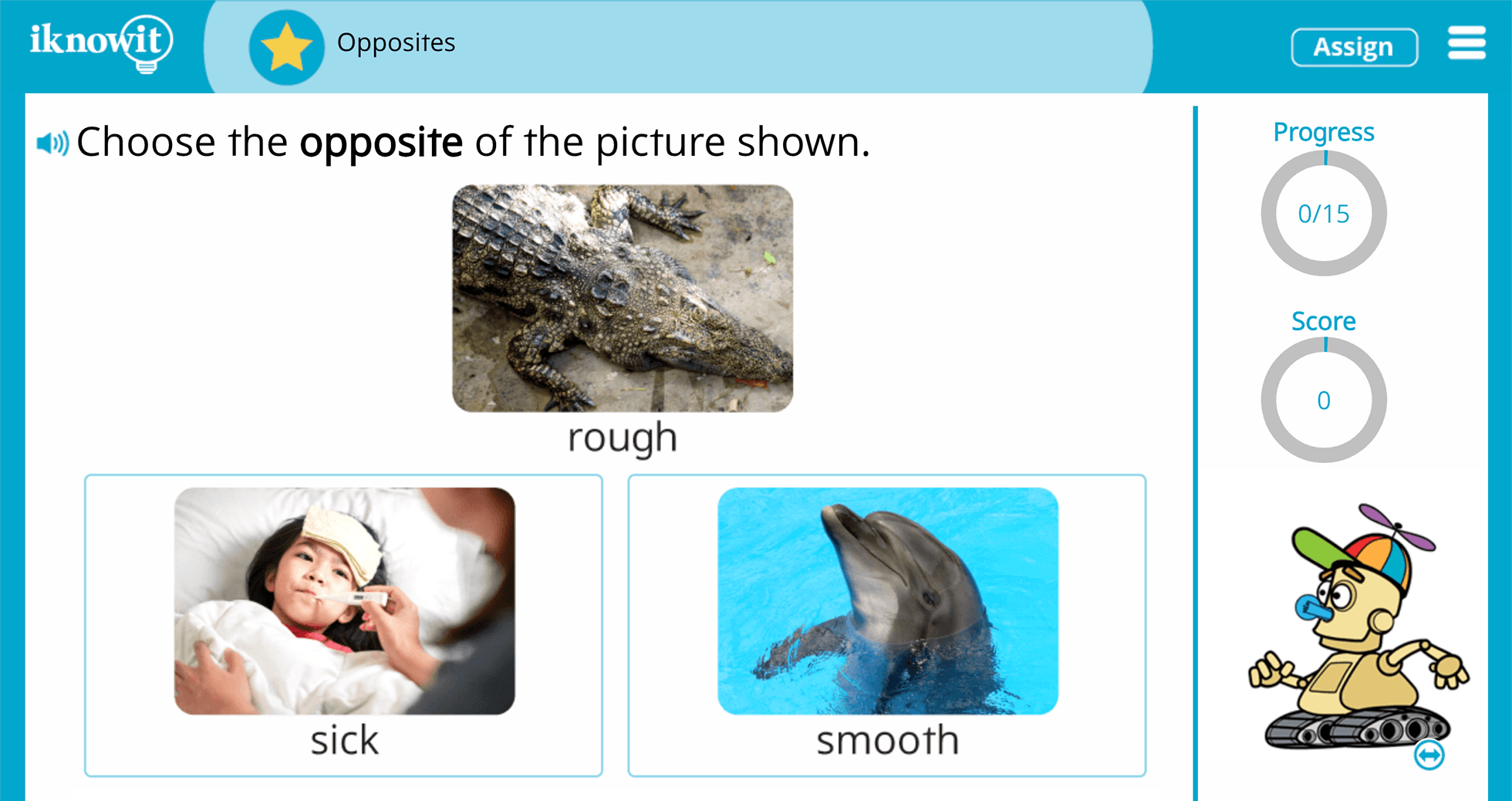
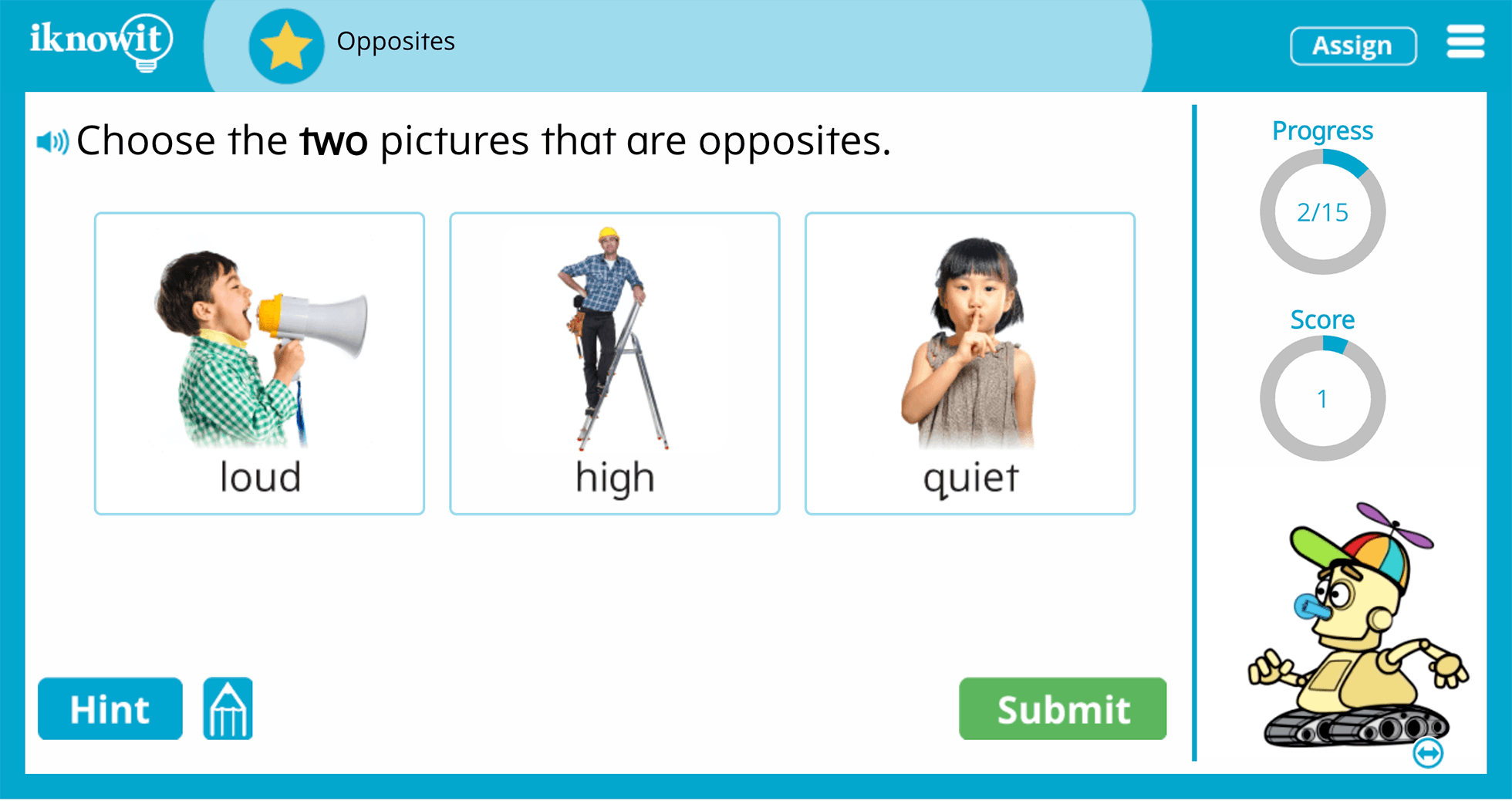
In kindergarten English Language Arts (ELA), students are introduced to the concept of opposites, also known as antonyms. Opposites are words that express contrasting or opposite meanings, such as "hot" and "cold," "big" and "small," or "happy" and "sad." Teaching opposites is crucial for early literacy development as it helps children expand their vocabulary, develop language skills, and understand the nuances of language. Recognizing and understanding opposites lays the foundation for comprehension and communication skills, which are essential for academic success in later primary school years.
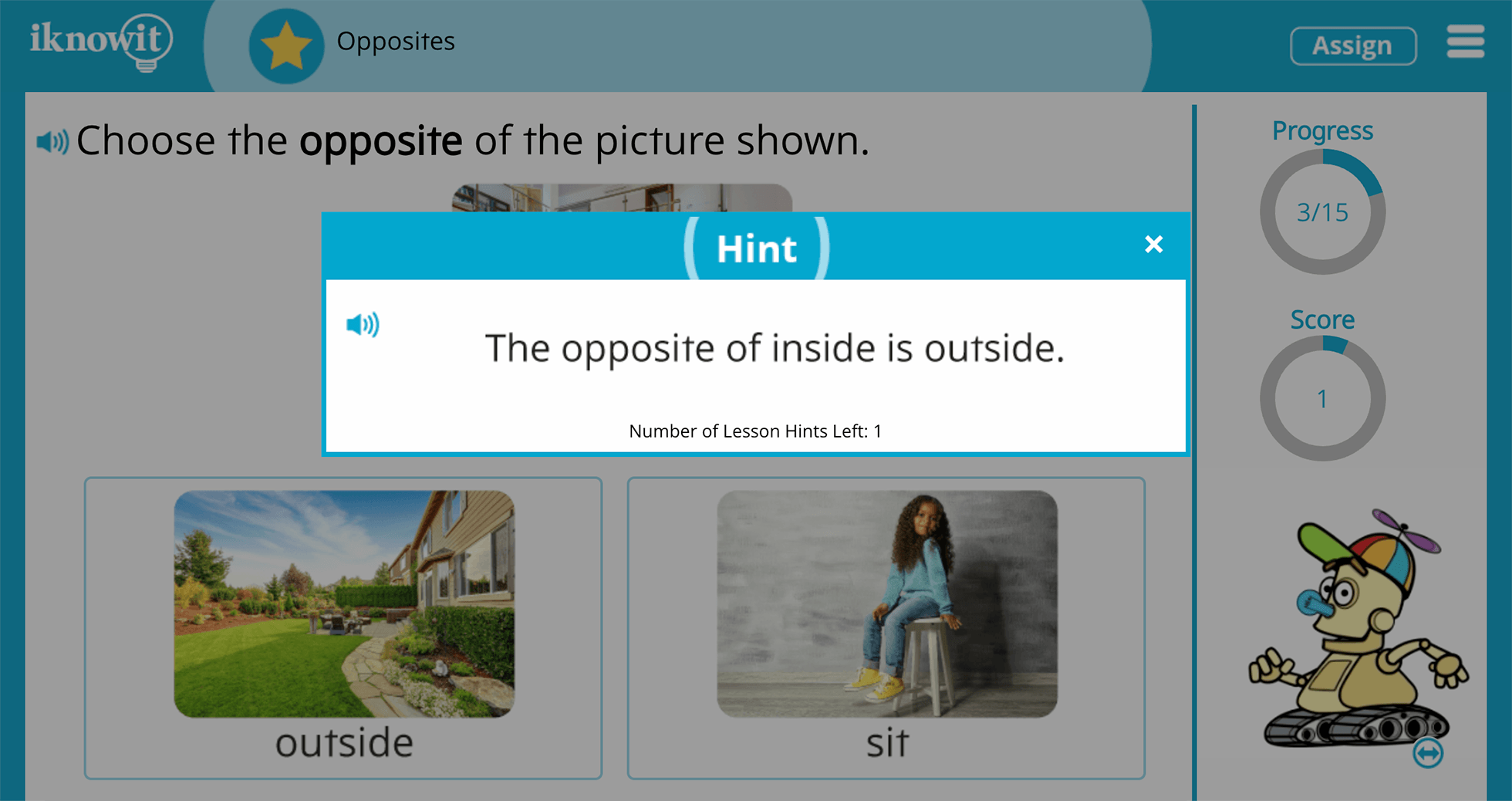
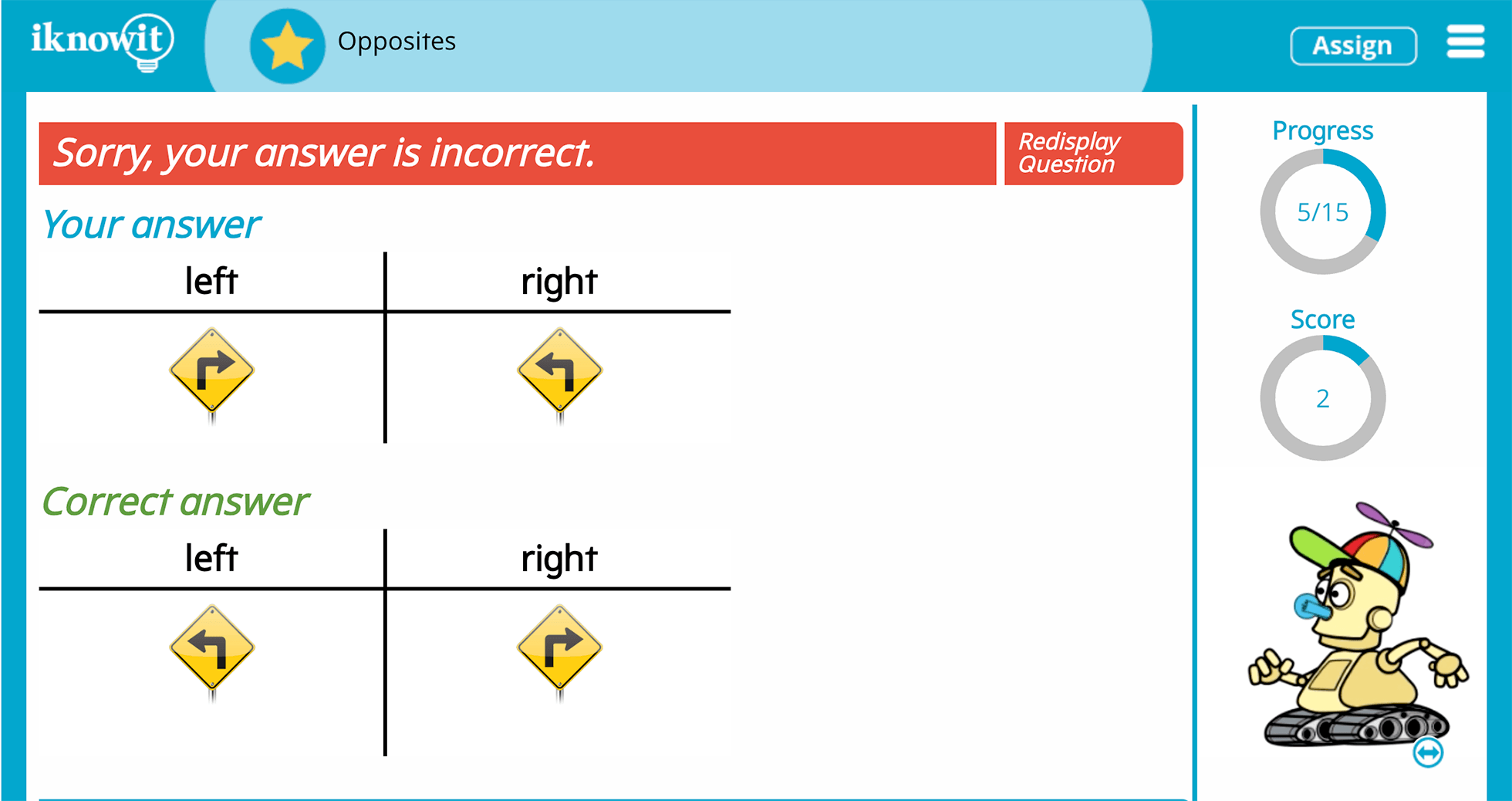
Educators utilize various strategies to teach opposites / antonyms effectively in the kindergarten classroom. Interactive lessons that incorporate visual aids, such as picture cards or illustrations, help students grasp the concept of opposites. Engaging activities, such as opposites matching games or charades, provide hands-on practice and reinforce learning. Teachers can also use literature and storytelling to introduce opposites in context, providing examples of opposites in everyday situations. For instance, reading books like "Big and Small" or "Happy and Sad" can help students identify and understand opposites in meaningful contexts. By providing a mix of interactive, hands-on, and literature-based learning experiences, educators ensure that kindergarten students develop a strong understanding of opposites / antonyms.
iKnowIt.com offers an online platform for kindergarten students to practice and reinforce their understanding of opposites / antonyms in an interactive and engaging way. Through a variety of interactive games and exercises, students can explore opposites concepts and enhance their vocabulary skills. The platform provides a range of activities designed to cater to different learning preferences and abilities, such as opposites matching games and interactive lessons. With immediate feedback and progress tracking features, students can monitor their performance and track their improvement over time. iKnowIt.com's interactive learning approach ensures that primary school students cultivate a strong foundation in opposites / antonyms while enjoying an enriching educational experience.
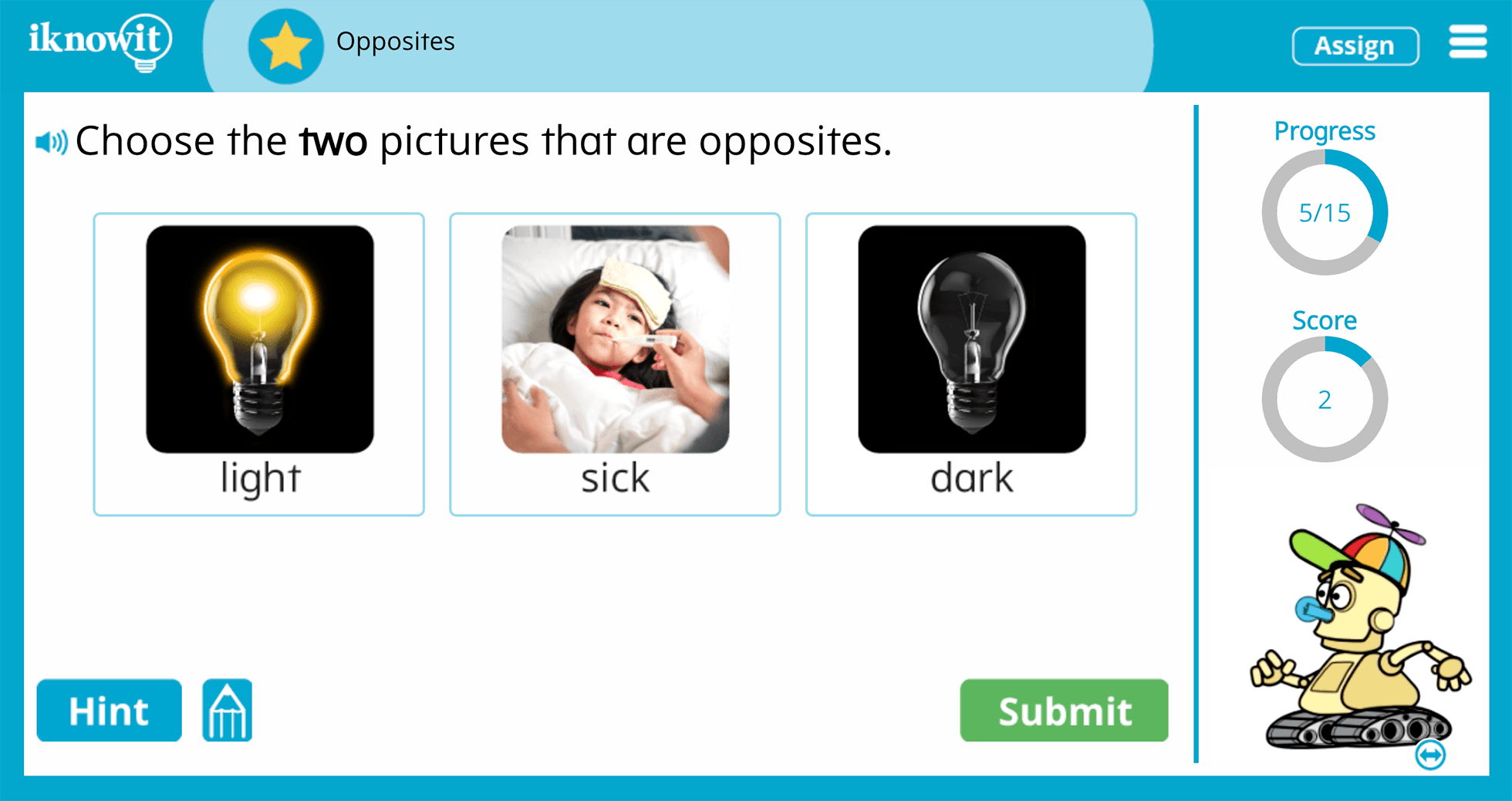
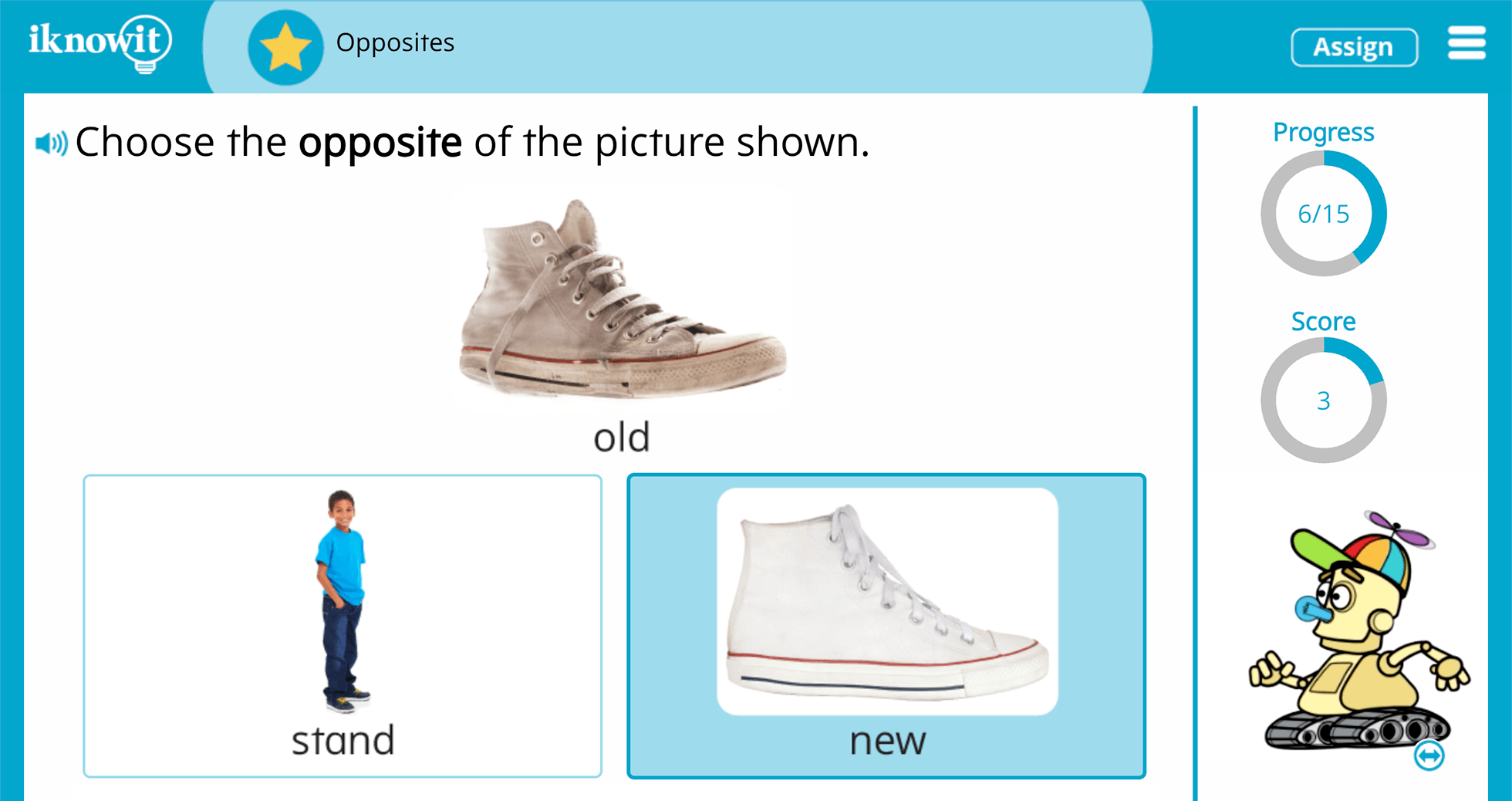
This interactive ELA lesson is categorized as Level K. It may be best suited for kindergarten students.
L.K.5B
Language
Vocabulary Acquisition and Use
Demonstrate understanding of frequently occurring verbs and adjectives by relating them to their opposites (antonyms).
Multiple Meaning Words (Level K)
Learn words that may have multiple different meanings.
Real Life Connection Between Words (Level K)
This interactive activity helps to teach how to discover real life connections between words.